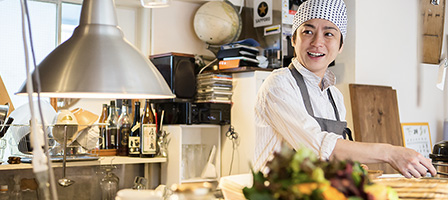As the Pandemic Continues, Managing Restaurant Cash Flow Becomes Critical
 Cash flow has always been a challenge for restaurants, and before COVID-19 changed everything there were thousands of articles written about the importance of forecasting, streamlining overhead, and controlling inventory. But more than a year-and-a-half into the pandemic, more than 110,000 restaurants have closed their doors permanently. Those restaurants that survived (and even thrived) in the face of closures, reduced seating, and staffing shortages went beyond traditional cash flow strategies, finding ways to reduce costs, expand sales, and pivot their entire menu. With reports of variants squashing hopes of a true return to normal, here are some of the cash flow management strategies that have helped other restaurants expand their clientele, pay their bills, and keep their doors open.
Cash flow has always been a challenge for restaurants, and before COVID-19 changed everything there were thousands of articles written about the importance of forecasting, streamlining overhead, and controlling inventory. But more than a year-and-a-half into the pandemic, more than 110,000 restaurants have closed their doors permanently. Those restaurants that survived (and even thrived) in the face of closures, reduced seating, and staffing shortages went beyond traditional cash flow strategies, finding ways to reduce costs, expand sales, and pivot their entire menu. With reports of variants squashing hopes of a true return to normal, here are some of the cash flow management strategies that have helped other restaurants expand their clientele, pay their bills, and keep their doors open. - Pay More Attention to Your Bookkeeping – It may be the last thing you want to think about, but during a financial crisis it is more important than ever to stay on top of your bills. The more up-to-date information you have about invoices and fees, as well as trends in your sales, the more confidence you can have in your decisions. Conversely, missing information about an unpaid bill can have devastating effects when you’re operating on a knife’s edge.
- Analyze Your Inventory … and Your Menu – Speaking of knife’s edge, one of the keys to boosting your cash flow is to avoid ordering food and alcohol items that aren’t contributing to it. Take a good look at your menu to see what is selling and what isn’t – and eliminate the slow movers, as well as their associated inventory items. Your goal is to boost the big sellers while improving your forecasting of the inventory that supports it. If you can, find menu items that cross-utilize the same ingredients so that you can leverage economies of scale. Many of the restaurants that have proven most successful during the pandemic have dramatically scaled back their menus.
- Update Your Payroll and Labor Analysis – Restaurants have always experienced high levels of turnover, and in anticipation of this have worked with forecasts of their needs based on historical data. But the pandemic has changed everything. Staffing has become more of a challenge and staff levels and schedules need to be made on a day-to-day basis determined by actual sales. Take a close look at the adjustments you’ve had to make in the last few months and build in seasonal forecasts as you can anticipate both slow and busy seasons ahead for both front-of-the-house and kitchen staff.
- Avoid Credit and Leverage Fast Cash Payments – When you first opened your restaurant, you likely relied heavily on credit, but it is much safer to do that when you’re in a period of growth than during a slowdown. If you are struggling to pay your bills, try to negotiate discounts for immediate payments to help you hold on to more of your cash. Yours is not the only food business that is hungry for cash, and you’re likely to find your vendors much more flexible on pricing when offered quick payment.
- Think Outside of the Box to Generate Sales and Decrease Costs – The restaurants that have failed during the pandemic have been the ones that were unable to pivot: They had no options for outdoor dining, or were unwilling or slow to convert to a delivery model. By contrast, restaurants that thought outside of the box were the ones that patrons flocked to time and time again. Some of the most successful strategies included:
○ Restaurants with kitchen staff available between lunch and dinner cooked up pizzas and opened “backdoor” versions of their restaurant. Patrons placed orders and paid online and picked up restaurant-quality gourmet pies with no contact.
○ Where local laws allowed, restaurants increased their profits by selling cocktails to go. Surveys revealed that customers were more likely to order from restaurants that offered alcoholic beverages with the meal, and that the average check for those selling alcohol was 10% higher.
○ Restaurants converted space once used for table to grocery operations that offered patrons the ability to pick up high-quality ingredients as well as pre-cooked meals.
○ Restaurants offered complete family-style meals that included large servings of comfort foods, complete with side dishes and desserts.
○ Restaurants converted their sidewalks, parking lots, and rear-alleys into outdoor dining areas with heat lamps and shelter.
○ Restaurants eliminated unnecessary expenses, including bread, flowers on tables, live music.
○ Restaurants enlisted waiters to act as delivery people, eliminating the costly use of third-party delivery services and providing employees with a source of income.
As always, feel free to reach out if you or someone you know needs assistance with cash flow management. We are here to help.
|
|  |





